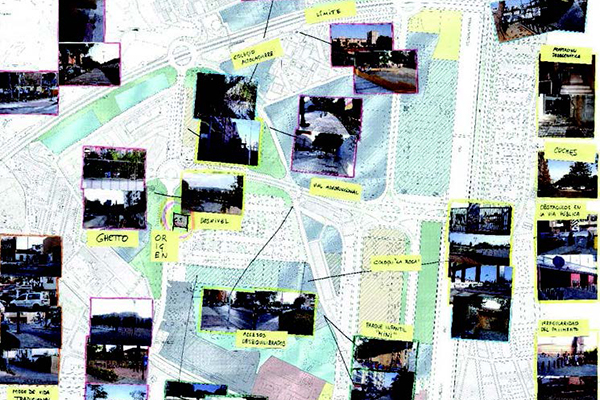La cartografía fenomenológica como apropiación de lo habitado: Talleres Género y Ciudad en Málaga, España
DOI:
https://doi.org/10.15168/xy.v7i13.2858Parole chiave:
feminismo, mapeo, urbanismoAbstract
El caso de estudio de talleres Género y Ciudad, desarrollados entre el 2011 y 2015 por el Ayuntamiento de Málaga (España), es un ejemplo de cómo la representatividad real permite la apropiación de la ciudad por parte de quienes participan en ella. Para ello, es primordial partir de un enfoque de dimensión de género para poder conocer la ciudad. La cartografía colaborativa in situ se presenta como metodología para el reconocimiento de los espacios cotidianos. Los primeros resultados propiciaron el debate sobre los problemas que ocurren en la ciudad, partiendo de la identificación de las dificultades individuales, para contextualizarlos en el barrio y en el espacio habitado. La representación de estos problemas es fundamental, pues el dibujo tiene la capacidad de nombrar. La idea de “lo que no se nombra no existe”, se traslada al dibujo. Lo que no se dibuja, no existe. El dibujo normativo del planeamiento trata aspectos como la tipología, la edificabilidad, la relación entre lleno y vacío, o la definición de lo público y lo privado. Pero las cuestiones cualitativas cotidianas como el miedo, la confusión, la incomodidad por la suciedad, el vacío de un solar abandonado o la soledad de las zonas productivas fuera del horario laboral, no se reproducen en ninguna planimetría y, por tanto, no forman parte del debate culto disciplinar. Este hecho favorece el proceso de privatización de los efectos negativos de la ciudad en las personas. Los resultados finales permitieron demostrar que el dibujo de cartografías colaborativas ayuda a visibilizar y nombrar los problemas. Y además se permite generar un sentimiento de pertenencia y de empoderamiento entre el vecindario de los barrios.

##submission.downloads##
Pubblicato
Come citare
Fascicolo
Sezione
Licenza
Copyright (c) 2024 XY. Studi sulla rappresentazione dell’architettura e sull’uso dell’immagine nella scienza e nell’arte

Questo lavoro è fornito con la licenza Creative Commons Attribuzione - Non commerciale - Condividi allo stesso modo 4.0 Internazionale.

